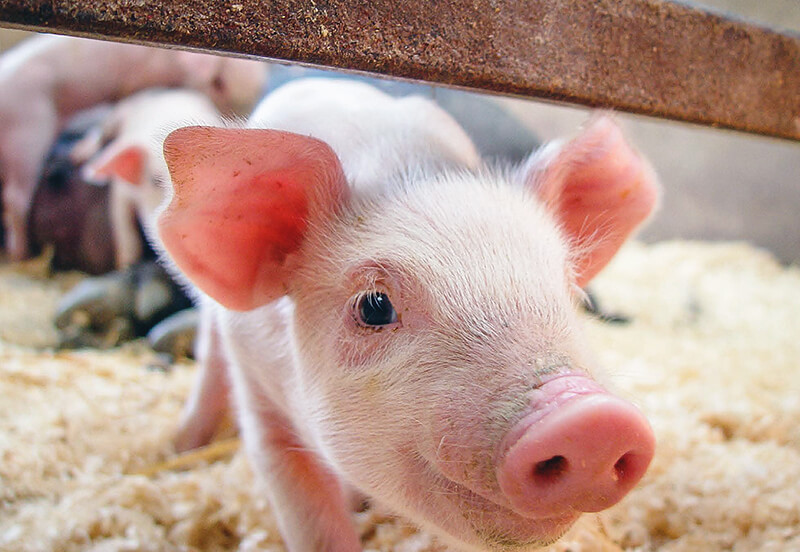Background Agricultural Connections
Farm animals or livestock are an important part of our nation’s agricultural industry and an important part of our survival. Not only do these animals serve to produce food (milk, meat, and eggs) high in protein, vitamins and minerals; they also provide many by-products (leather, wool, medical products, etc.) which we cannot live without.
Farm animals have specific names according to their gender and age. For example, an adult female sheep is called a ewe and an adult male is called a ram. A newborn or young sheep is called a lamb. You will find a list of animal terms in the Livestock Flowchart. While more terminology exists, this lesson focuses on the names of adult males, females, and babies.
Those involved in the production of livestock animals must understand the needs of animals at each stage in their life cycle. These agriculturalists realize that they are raising livestock for two major purposes. First, for meat and by-products (this means the animal will be sent to market or harvested at the appropriate point in its life cycle) and second, to produce more animals (these are the males and females that are bred to create offspring). Farmers and ranchers feed and care for animals according to their needs, which depend upon their age and their location.
Farm animals and humans have similar necessities of life to live and grow. Humans and animals both require food, water, and shelter. However, these life necessities are fulfilled in different ways. Humans need clean or purified water. Animals can drink from streams, ponds, and other natural water sources and generally be unaffected by microorganisms that make humans sick. Both animals and humans require healthy food for their diet. Most farm animals thrive on feed that humans cannot digest. For example, cows, goats, and sheep have a multi-compartment stomach which allows them to break down and use the energy and nutrients found in grass and hay. These farm animals then convert their energy into food humans can eat, such as meat and milk. Animal and humans both need shelter from harsh elements—heat during cold weather and cool air during extreme heat. Humans regulate body temperature with their physical environment. We generally live in heated houses to protect ourselves from the cold and use blankets and sweaters to keep warm. Animals have natural defenses. Thick hair or wool on livestock provides insulation from cold temperatures. In some climates, farmers provide enclosed barns or covered areas for warmth in the cold and shade in the heat.
